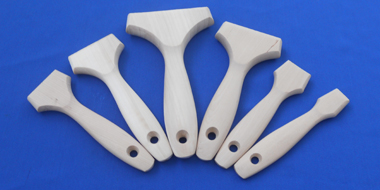
In recent years, in order to protect forest resources and maintain ecological balance, many forest areas have gradually been banned from commercial logging, especially the forestry wetlands dominated by Daxing and Xiaoxing 'anling in the Northeast, which has led to a significant decline in China's timber production and it is difficult to meet market demand.
The forest area of China is 175 million square meters, the forest coverage rate is 18.21 million, and the forest accumulates 12.456 billion cubic meters, of which the timber forest accumulates 5.51 billion cubic meters, accounting for 44 million. On a per capita basis, we are a very poor timber country. The per capita forest area is 22 inches of the world average, ranking 134th in the world, and the per capita forest stock is 14.6 inches of the world average, ranking 122 in the world.
According to China's demand and investment advisory report on the timber industry from 2016 to 2021, the relatively slow growth rate of timber harvesting will mean a significant increase in import demand. China's import demand is already equivalent to 10 tons of the global total.
China's total ban on natural forests is one of the reasons for the increased demand for imported timber in the domestic market. After the country completely stopped commercial logging of natural forests in 2017, domestic commodity timber production decreased by about 40 million cubic meters each year. In order to meet the needs, China will import a large amount of wood to make up for the lack of supply of raw materials. At present, China's external dependence on wood has reached 50.
According to relevant data, log imports increased from 4.471 million cubic meters in 1997 to 48.727 million cubic meters in 2016, an increase of 9.9 times; The import of sawn timber increased from 1.325 million cubic meters in 1997 to 31.5127 million cubic meters in 2016, an increase of 22.79 times.
In the first half of 2017, China's cork timber imports reached 17.51 million cubic meters. In the first half of 2017, the main imported cork species were Radix pine(43 <UNK>), spruce(14 <UNK>) and fir(12 <UNK>), Korean pine and European red pine(12 <UNK>), larch pine(7 <UNK>) and Citigroup(5 <UNK>).
Imports of Radix pine and Citi pine increased by 14 and 6, but imports of Korean pine, European red pine, spruce, fir and larch decreased by 18, 5 and 2, respectively. These species account for 81,000 of the total imports of cork logs.
Chinese radiative pine is imported from New Zealand(78<UNK>) and Australia(21<UNK>), with a small amount coming from South Africa and Chile. More than 90 kms of spruce and fir logs were imported from Russia(61 kms), Canada(16 kms) and the United States(15 kms), Pine(Korean and Scottish pine) is imported from Russia(86) and Ukraine(6).
Chinese larch logs are imported from Russia and New Zealand, while Citi pine logs are imported from the United States(55 <UNK>), Canada(28 <UNK>) and New Zealand(17 <UNK>). A small amount comes from France, Australia, Denmark and Russia.
According to the "Analysis and Forecast Report on the Development of the Timber Industry", depending on the rapidly increasing timber imports in China, a number of ports or ports featuring imported timber have rapidly developed, and more and more ports are paying attention to imported timber. Large quantities of wood are being imported.


